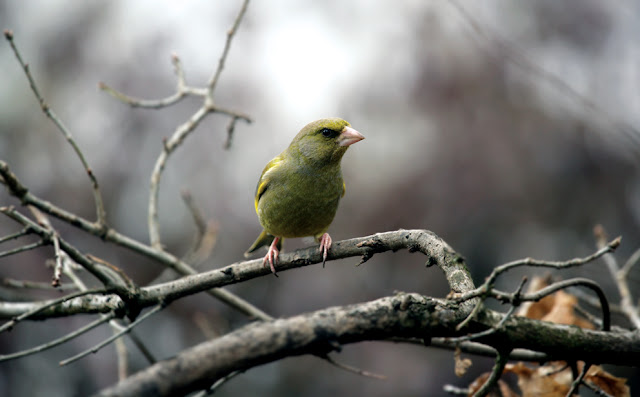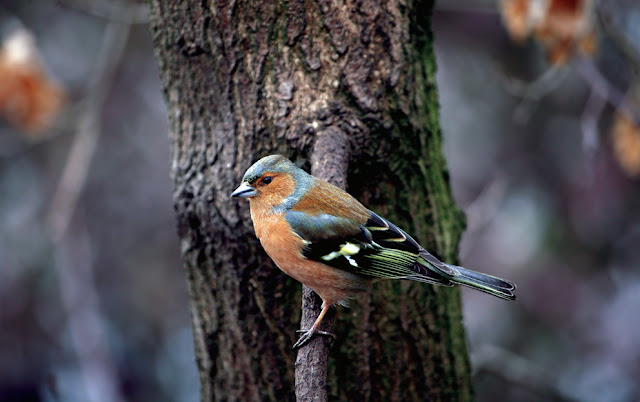 |
| Canon 1Ds MkII, Canon 100-400mm IS L lens, 1/125th sec, f/5/6, 250mm at ISO 400 |
20130331
North American River Otter
I would love to be able to tell you that I had nipped over to the States for a few days to photograph some of that nation's wealth of flora and fauna. Sadly the best I could manage over a busy Easter weekend was a trip to a local wildlife park on the North Norfolk coast. I was rewarded, however, by this shot of a North American River Otter (Lontra canadensis) which – although shot through glass and tricky to get any sort of focus to latch on – does, I think, have a an air of realism about it. I'm drawn to the knowing, inquisitive eyes, the abundant whiskers – which are used extensively in hunting for prey (especially organisms hiding in the river substrate) – and the ribbon of air bubbles, which underline the picture's sense of movement. The story of this beautiful, highly intelligent animal's population health is a mixed one; according to the University of Michigan, populations were once eliminated through many parts of their range, especially around heavily populated areas in the midwestern and eastern United States. Population trends have stabilised in recent years, however, and reintroduction and conservation efforts have resulted in recolonisation in many areas.
20130328
Grumpy Greenfinch
Labels:
Greenfinch (Carduelis chloris)
This image is here because I adore that default expression of a distinctive scowl, which lends the Greenfinch such presence. It seems to fit so well with a bird which, although generally happy to rub along with others, also never seems too far away from starting a squabble.
PS: Just realised I had posted this earlier; this is a different crop, which I prefer.
PS: Just realised I had posted this earlier; this is a different crop, which I prefer.
 |
| Canon 1Ds MkII, Canon 100-400mm IS L lens, 1/200th sec, f/5.6, 400mm at ISO 400 |
20130325
The rise and fall of the House Sparrow
I love these cocky,
confident and cheeky little creatures and it's sad that the bird described by
the RSPB as "the ultimate avian opportunist" is still struggling in
the UK. While the sparrow has colonised most of the world, here House Sparrows
have seen their numbers decline alarmingly, recently
estimated as dropping by 71 per cent between 1977 and 2008 with substantial
declines in both rural and urban populations. Indeed there are now thought to be 10
million fewer House Sparrows in the UK than there were 25 years ago. The blame
has been pointed at everything from cats to air pollution, but recent research
suggests two factors are having the most impact – fewer meadow and garden insects to feed on, especially in spring and summer, because of the urbanisation of our green spaces; and a reduction in the availability of suitable nest sites as house design has changed and gardens have become tidier with fewer hedgerows. If you'd like to help by building a communal terrace nestbox designed specifically for sparrows, then Lincolnshire Wildlife Trust has a simple to construct design here.
 |
| Canon 1Ds MkII, Canon 100-400mm IS L lens, 1/320th sec, f/6.3, 400mm at ISO 250 |
 |
| Canon 1Ds MkII, Canon 100-400mm IS L lens, 1/250th sec, f/8, 400mm at ISO 250 |
 |
| Canon 1Ds MkII, Canon 100-400mm IS L lens, 1/320th sec, f/6.3, 400mm at ISO 250 |
 |
| Canon 1Ds MkII, Canon 100-400mm IS L lens, 1/200th sec, f/8, 400mm at ISO 250 |
20130324
Black-headed Gulls
Finally today a hint of sunshine – and what a difference it makes. Although bitterly cold (a driving easterly made it feel like -6ºC on the snow-covered North Norfolk coast) I managed to get out for an hour or so to shoot Black-headed Gulls wheeling on the wind. I have enormous respect for wildlife photographers who manage to capture their subjects in such fine detail and in such pristine conditions that it is as if viewing a facsimile. On the rare occasions when I actually manage something close to this, I'm delighted. But I do think there is a place for another kind of wildlife photography; the kind that coveys more atmosphere, more feeling, more context. I think the first of these images might fall into that category. Yes, the lead bird is sharp, but the picture is much more about the character of the subjects; the sense, for example, that a squabble is never far away
 |
| Canon 1Ds MkII, Canon 100-400mm IS L lens, 1/2,500th sec, f/5.6, 400mm at ISO 250 |
 |
| Canon 1Ds MkII, Canon 100-400mm IS L lens, 1/2,500th sec, f/5.6, 310mm at ISO 250 |
 |
| Canon 1Ds MkII, Canon 100-400mm IS L lens, 1/2,500th sec, f/5.6, 310mm at ISO 250 |
20130322
Bearded Reedling
I may just be obsessed with the late arrival of spring (this is not helped by the fact that we have run out of heating oil and the house is freezing), but this Bearded Reedling looks as if he, too, is fed up with waiting for warmer temperatures and an end to the unseasonal gloom. Don't you just adore the crestfallen, grumpy appearance lent by the distinctive black 'moustache'? There is something of the plump Edwardian gentleman about this handsome bird.
 |
| Canon 1Ds MkII, Canon 100-400mm IS L lens, 1/500th sec, f/5.6, 400mm at IDO 400 |
Blackbird
Labels:
Blackbird (Turdus merula)
20130321
Guess the season...
Five simple shots gleaned from an hour or so out and about. What's interesting about them, however, is that if you look at the desiccated, russet oak leaves and the almost complete absence of foliage or new growth I reckon these could be taken as having been captured in late September or early October. In fact, they were all taken this afternoon – the day after the spring equinox. We can only hope that this weekend's predicted heavy snow in Norfolk will be winter's last throes and the seasons get back into kilter quickly. It's been a long, long wait for sunshine and vibrant colours.
 |
| Canon 1Ds MkII, Canon 100-400mm IS L lens, 1/200th sec, f/5.6, 400mm |
 | |
|
 |
| Canon 1Ds MkII, Canon 100-400mm IS L lens, 1/160th sec, f/5.6, 400mm |
 |
| Canon 1Ds MkII, Canon 100-400mm IS L lens, 1/160th sec, f/5.6, 400mm |
20130320
The Puffins of the Farne Islands revisited
I've been planning my next trip to the Farne Islands off the coast of Northumberland. I last went a couple of years ago, but for a number of reasons went a few weeks earlier than I would have liked. This time round, I'm hoping to visit Inner Farne in June, when a couple of things should be better. The first is that I'm hoping the weather will be more favourable, offering more light than last time, when fog and grey clouds were abundant. The second is that leaving it just a little later should mean the Puffins will be present in greater numbers and with plenty of hungry chicks to feed. So, while I count down the days, I've been editing a few shots that weren't (I hope) posted last time round...
20130319
Blue Tit (Cyanistes caeruleus)
Labels:
Blue Tit (Cyanistes caeruleus)
Just a simple portrait of a Blue Tit, but I am drawn to the painterly feel of the shot brought about by attempting to capture the bird in low-light conditions. The halo of available light around its body and tail were an added bonus. I have seen fewer in the garden this winter/early spring than in previous years; I suspect the long, drawn-out spell of low temperatures has sadly taken its toll. Let's hope for a warm, dry spring.
Subscribe to:
Posts (Atom)






